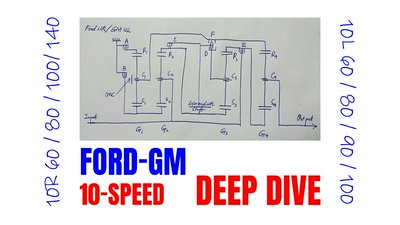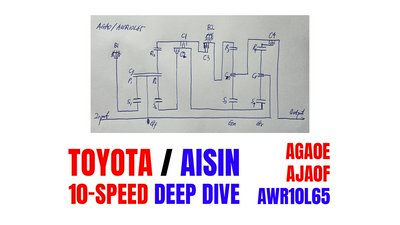techXXX
Ten Classic Maserati Vehicles That You Will Lust After
Maserati's racing success peaked in the 1950s, whereupon it focused on building luxury grand tourers. Today, I briefly go over 10 classic Maserati vehicles that you will appreciate as an enthusiast.

Maserati was one of the earliest names in motor racing with records that rivaled the likes of Mercedes and Auto Union. Its racing success peaked in the 1950s, whereupon Maserati focused on building luxury grand tourers. Many of its iconic designs are by Carrozzeria Touring, Bertone, Vignale, and Italdesign. Today, I briefly go over 10 classic Maserati vehicles that you will appreciate as an enthusiast.
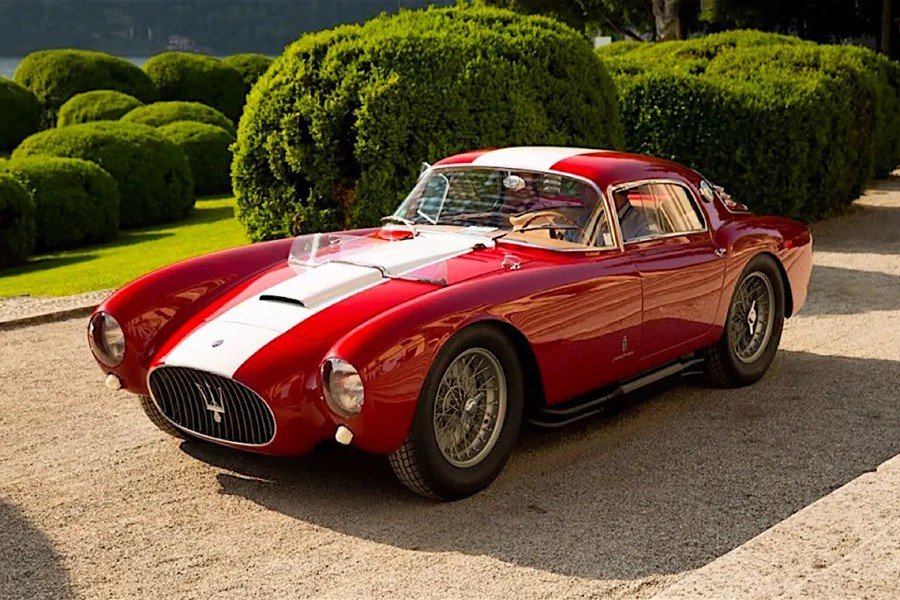
A6GCS/53
- 1953-1955
A6 was Maserati’s first post-war series, with the 6 denoting the car’s 2L inline-6 engine. The A6GCS had cast iron engine block, Ghisa, and was intended for racing, Corsa Sport. The A6GCS/53 was bodied by several coach builders, with the Pinin Farina berlinetta and Vignale spider being the most loved. This would be the last design of a Maserati by Pininfarina until the Quattroporte V.
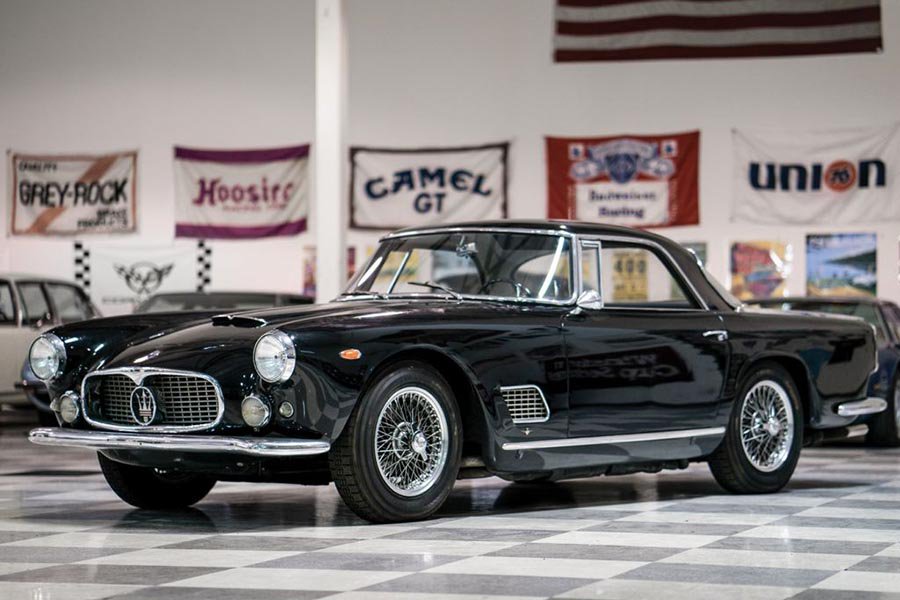
3500 GT (Tipo 101)
- 1957-1964
The Type 101 3500 GT was the first mass-produced Maserati model and started the company’s success in the luxury grand tourer market. As its name suggests, it was powered by an all-aluminum 3.5L inline-6 engine that featured dual ignition, dual fuel pumps, and either three twin-choke Weber carburetors or Lucas mechanical fuel injection. The latter option made it the first Italian road car with fuel injection; it was known as the 3500 GTi. Earlier cars were fitted with 4-speed manual transmission, which was upgraded to 5-speed in 1960. The 3500 GT coupe was designed by Carrozzeria Touring, featuring the coachbuilder’s patented Superleggera construction. The 3500 GT Spyder was designed by Vignale and had a more ordinary steel body.
If you think the 3500 GT looked awfully close to the Aston Martin DB4 through DB6, this is no coincidence: the Astons were also the works of Carrozzeria Touring from the same period.
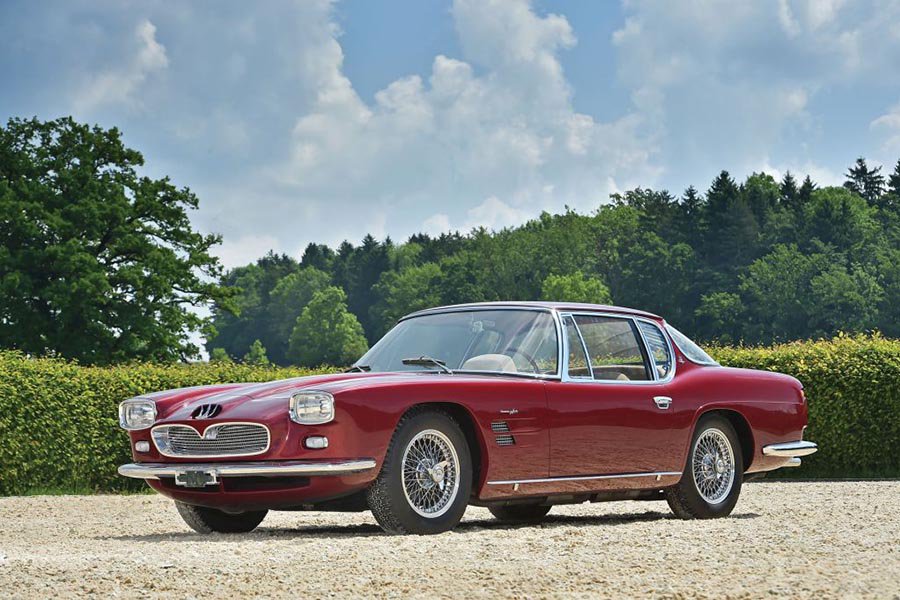
5000 GT (Tipo 103)
- 1959-1965
The Type 103 5000 GT was a considerably more exclusive car built on the foundation of the 3500 GT. Initially, it was commissioned by the Shah of Iran, who demanded more power. The 4.9L DOHC V8 was based on the 4.5L V8 from the Tipo 54 Maserati 450S racing car. It featured Lucas mechanical fuel injection or four twin-choke Weber carburetors; dual spark and dual fuel pumps were also used. The engine developed 325hp, more than the Ferrari 250 of the day. Earlier cars were fitted with a 4-speed manual transmission, which was upgraded to 5-speed in 1960. Like the 3500 GT, the 5000 GT had a body designed by Carrozzeria Touring and used its Superleggera construction. In 1959, the 5000 GT was sold at $17,000. Today, it remains one of the rarest and most exclusive Maserati road cars.
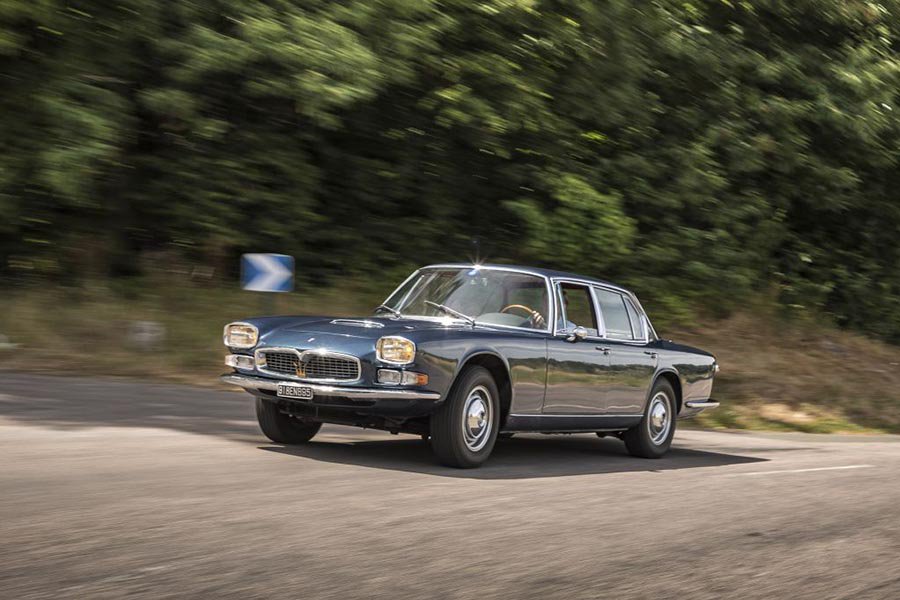
Quattroporte I (AM107)
- 1963-1969
The first-generation Quattroporte, Type AM107, was the genesis of the super sedan and the spiritual progenitor of the likes of the BMW M5 and the Mercedes 300 SEL 6.3. However, it was also an exceptionally luxurious car with superb handling (at least for the day), a balance that the Germans cannot seem to grasp. The AM107 featured an all-aluminum 4.1L DOHC V8 that produced 260hp. The engine featured inserted cast iron wet cylinder liners, 32 angled valves, hemispherical combustion chambers, water-cooled intake manifold, and four twin-choke Weber carburetors. This V8 would power Maserati vehicles into the 80s. It was mated to a 5-speed manual transmission or an optional 3-speed automatic. From 1968, a 4.7L version with 286hp was added, making it the fastest sedan in the world. The body was designed by Pietro Frua but built by Vignale.
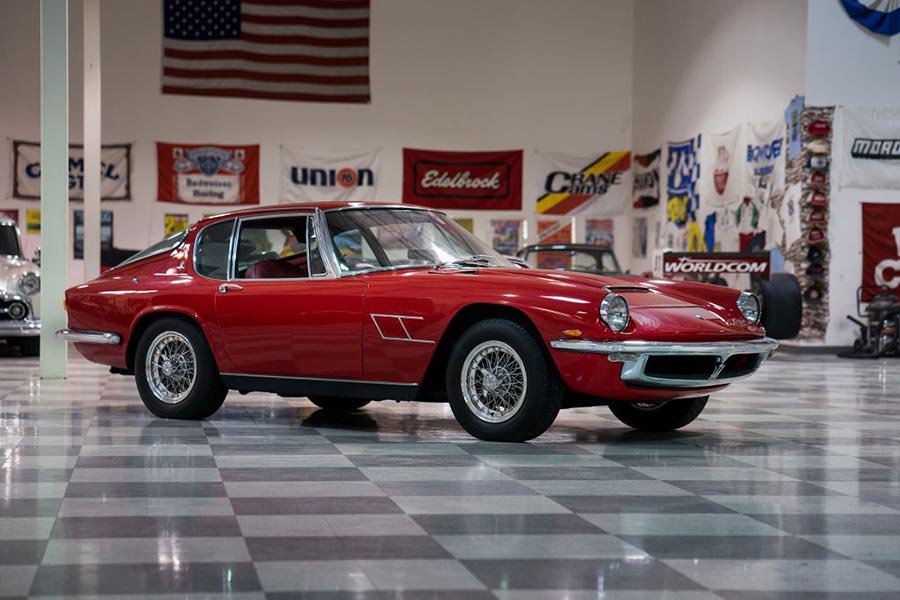
Mistral (AM109)
- 1963-1970
The Type AM109 Mistral was the successor to the 3500 GT, though it was a 2-seater; the 2+2 model sold alongside was the Sebring. The Mistral was powered by the final iterations of Maserati’s classic twin-spark DOHC inline-6 engine on which the company’s racing success in the 1950s was built. Eventually, it displaced 4L and was paired with a 5-speed manual transmission. This gorgeous GT was designed by Pietro Frua, like the Quattroporte. Naturally, a Spyder version was also built.
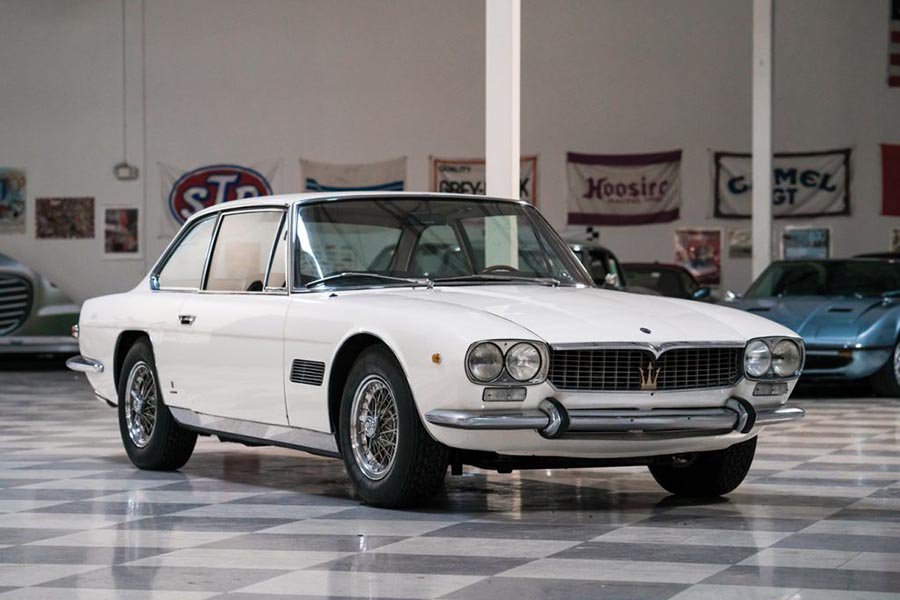
Mexico (AM112)
- 1966-1972
The Type AM112 Mexico was a 4-seat coupe based on the AM107 Quattroporte, whose chassis was shortened by 11cm. The Mexico was originally powered by the 4.7L V8 found in the Series II AM107 Quattroporte. In 1969, the newer, smaller 4.2L V8 engine was made available as a cheaper option. The Mexico was unique in its combination of exceptionally luxurious interior, grand tourer form factor, and seating for four adults. It was designed by Vignale.
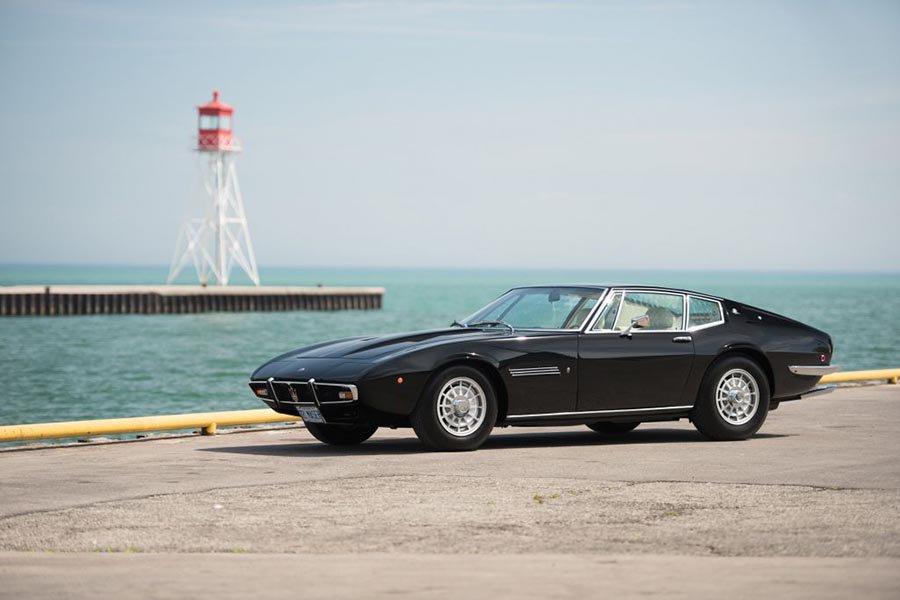
Ghibli (AM115)
- 1967-1973
The Type AM115 Ghibli was the successor to the 5000 GT that also replaced the Mistral. It was powered by an evolution of the Tipo AM107 V8, now typed AM115. It features dry sump lubrication and four twin-choke Weber carburetors. The standard Ghibli displaced 4.7L, while the Ghibli SS had the stroked variant of the V8 that displaced 4.9L. Five-speed manual was standard, while 3-speed automatic was optional. The AM115 Ghibli was designed by Giorgetto Giugiaro at Ghia, right before he started Italdesign. The car’s fastback profile and pop-up headlights clearly influenced the design of the Ferrari Daytona. Naturally, an open-top Ghibli Spyder was also made.
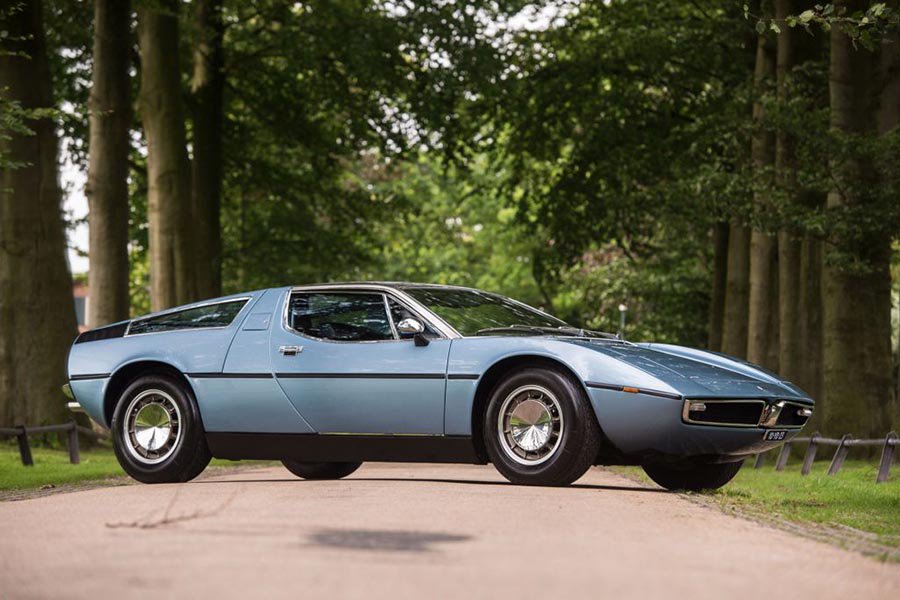
Bora (AM117)
- 1971-1978
The Type AM117 Bora was Maserati’s first mid-engine sports car. It was introduced after Lamborghini had introduced the Miura, which started the mid-engine sports car rage in 1966. It used essentially the same 4.7L and 4.9L engines from the Ghibli mounted longitudinally. A 5-speed manual transaxle was used. The Bora was designed by Giorgetto Giugiaro at Italdesign. It featured an iconic wedge shape and pop-up headlights. Unlike most mid-engine sports cars, the Bora was also a luxurious vehicle with a focus on comfort as well as performance. The Bora was the first Maserati to feature four-wheel independent suspension.

Khamsin (AM120)
- 1974-1982
The Type AM120 Khamsin was the successor to the Ghibli, inheriting the latter’s 4.9L AM115 V8. It had a 5-speed manual transmission as standard, with 3-speed automatic as an option. A markedly smaller car, the Khamsin’s rear seats were not really useful. The Khamsin has an even more wedgy design than the Ghibli and the Bora. This was the work of Marcello Gandini at Bertone. As the oil crisis hit large displacement luxury vehicles particularly hard, and as Lamborghini became established as a competitor, the Khamsin marked the end of an era for Maserati.
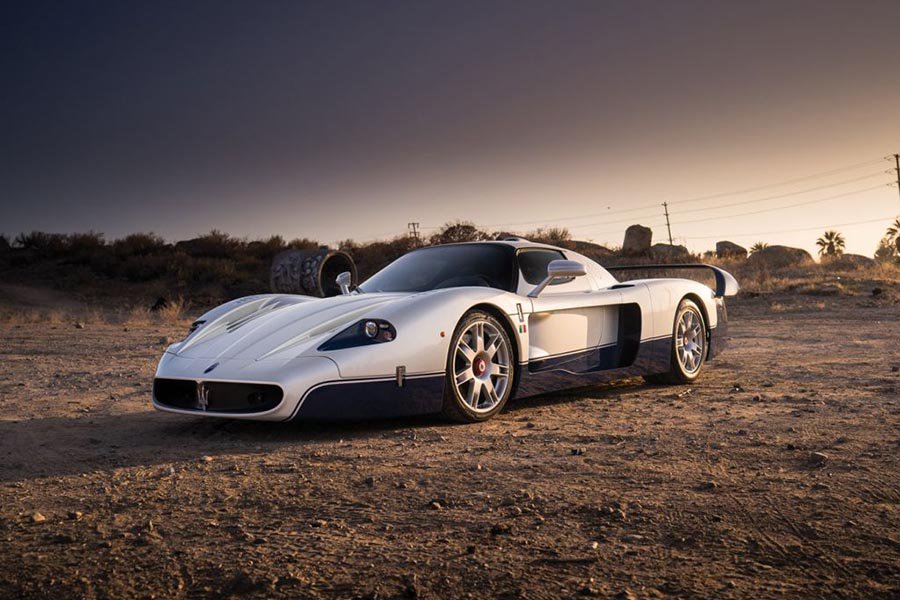
MC12 (M144S)
- 2004-2005
In 1999, Ferrari took control of Maserati, its long-time rival. A new lineup with more compelling vehicles appeared, notably the 3200 GT and the Quattroporte IV Evoluzione with the 3.2L AM578 biturbo V8. The most iconic and collectible Maserati of this renaissance is undoubtedly the Type M144S MC12. Essentially a more exclusive variant of the Ferrari Enzo, the MC12 is the true successor to the Bora of the 1970s. It features a gear-driven Ferrari F140 V12 engine paired to a 6-speed automated manual transaxle.
